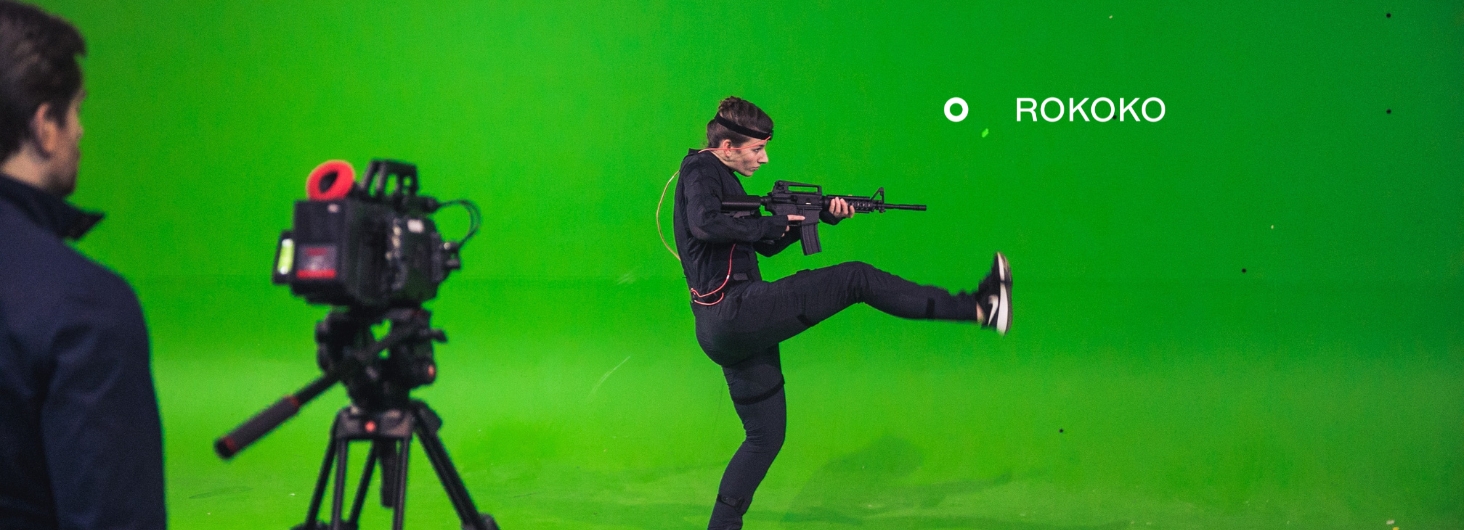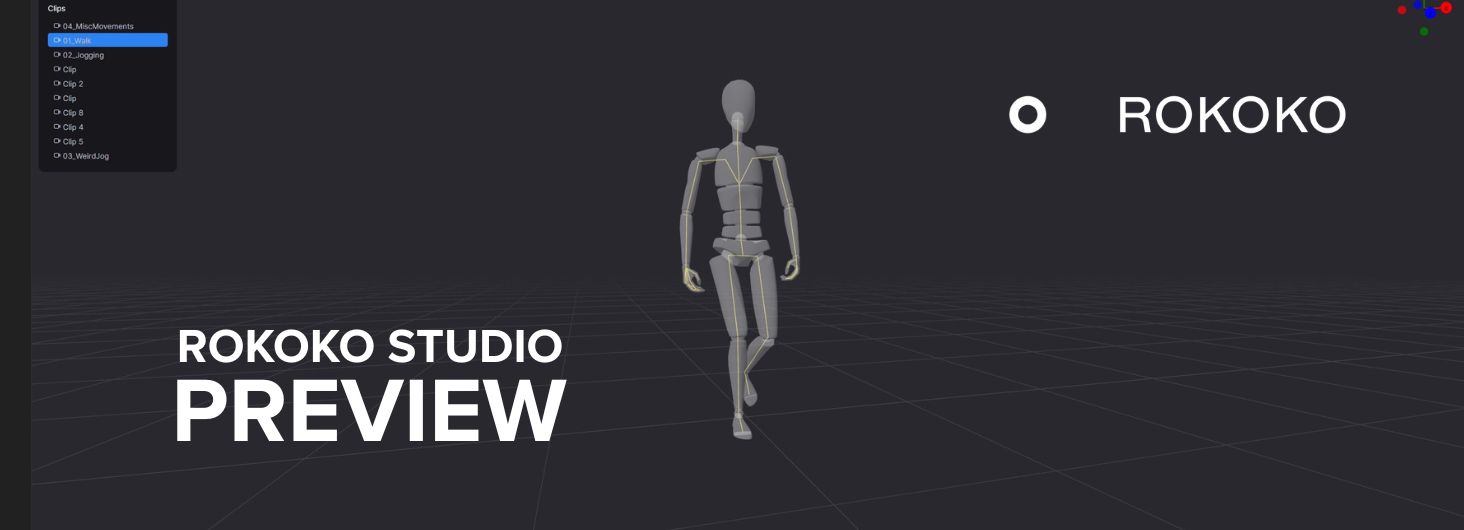
The Future of Motion Capture: How Good is Vision AI Mocap in 2025
Just a few years ago, the motion capture market had a relatively clear landscape. On one end, you had high-end, marker-based systems - expensive, complex, and out of reach for most creators. On the other end, IMU-based systems like Rokoko’s offered an affordable and mobile alternative that helped democratize access to motion data. And then there was a small handful of early vision-based companies - Plask, DeepMotion, Move.ai - experimenting with AI-powered mocap through the webcam or smartphone lens.
Today, that landscape looks very different.
The number of companies trying to solve motion capture with computer vision has exploded. From indie tools built on top of Gemini API pipelines like Cartwheel, to fast-moving teams in China like QuickMagic, to academia-backed startups like Meshcapade, and Kinetix, there’s no shortage of players. And yet… we’re still far from seeing a clear winner.
How Vision AI has changed motion capture, and what still holds it back
The rise in new entrants is no coincidence. Over the past 18 months, the building blocks for accurate vision-based pose estimation have rapidly improved:
- Foundation models are better at depth and 3D understanding
- GPUs are cheaper and more widely available
- High quality motion data (including synthetic data) is being collected and flowing into training pipelines like never before
And yet, many of these tools remain fragile, inconsistent, or limited in real-world use. Some struggle with occlusions. Others fail on anything but perfectly lit, front-facing footage. Most are black-box APIs with little transparency, and none have fully solved global accuracy, real-time performance, or multi-character interaction.
Still, the trajectory is undeniable. Vision AI will reshape motion capture. The key is how it will reshape it - and who it will serve.
Monocular Vision AI will eat the bottom of the market
Let’s start with the bottom of the pyramid: hobbyists, indie game devs, VTubers, animators on a budget. This is the part of the market that doesn’t need centimeter-accurate body tracking. They want to take a TikTok, YouTube video, or gameplay clip and turn it into animation - fast and cheap.
For these users, single-camera (monocular) AI mocap is already good enough - and getting better every month.
It isn’t perfect at capturing nuanced contact with the floor, believable physics, or anything where occlusion is unavoidable. But that’s okay. As long as it works reliably enough, these users will trade some accuracy for the convenience of not needing to wear a suit or set up a capture space.
This is where monocular Vision AI is already winning.
Solutions like Captury, DeepMotion, Move AI’s single-cam mode, QuickMagic, Meshcapade, Radical, Rokoko Vision, and even open-source wrappers are gaining traction. This layer of the market is being commoditized and will likely eventually be consolidated by fewer ecosystems with a broader offering.
Multi-cam Vision AI will challenge the high-end market
Now flip the pyramid. At the top of the market - VFX houses, AAA studios, research labs - accuracy and repeatability matter. Marker-based systems like Vicon, Qualisys, and OptiTrack have ruled this space for decades, but they come with enormous cost, space, and workflow overhead.
This is where multi-camera Vision AI is starting to make serious waves.
By triangulating multiple camera angles with smart vision models, companies like Move AI, Yoom, Captury, and others are closing the gap with traditional optical systems. You still need a capture space, and setup isn’t trivial - but compared to 30 reflective markers and a $200K-2M rig, it’s an enormous step forward.
These tools can often:
- Deliver millimeter-level accuracy in well-lit environments
- Support multiple actors in a single scene
- Handle body + hand capture (though still weak on face)
- Scale well for studios building virtual production pipelines
We expect multi-cam Vision AI to take an increasing share of the high-end market, especially for new studios that can’t justify legacy systems.
But here too, the winners aren’t obvious. Questions around latency, calibration, lighting requirements, and IP ownership (especially when uploading to cloud-based tools) are still holding back full adoption. And after the suits are gone, we are still stuck with many of the same issues that marker-based systems are struggling with today (occlusion, space requirements, calibration etc.)
So where does that leave IMU-based motion capture?
Some people assume IMU-based systems will be made obsolete by Vision AI.
We disagree.
Here’s what IMUs still do better than anything else:
- Portable performance in any setting - smaller spaces, daylight, indoors, or outdoors
- No dependency on video or camera angle (no occlusion issues)
- Real-time feedback with minimal latency
- Full-body capture - including hands and face - inside one integrated system (at least with Rokoko)
- Unlimited recordings with no usage costs (unlike AI systems that costs per usage)
- Better control of user privacy. No need for uploading of video files to (often third party) cloud solutions.
As Vision AI becomes more accessible, we believe IMUs will find a new, durable position in the middle of the market - serving creators who want high-quality, real-time capture without studio constraints, but who also aren’t ready to trust their pipeline to an API black box.
The most likely future: A consolidated but larger total market
It seems clear that there are too many ambitious players for a still relatively niche market. As the tech becomes more easily accessible through shared R&D in computer vision, AI, better hardware/compute etc. the space will likely consolidate with fewer key players, offering ecosystems consisting of several offerings, covering more of the workflow.
Rather than killing each other off, we believe these approaches will coexist, and the overall motion capture market will grow.
More creators will enter. More workflows will emerge. And the cost of getting from idea to animation will drop.
Final thought: Don’t wait for perfection
We often talk to indie creators who are “waiting for the perfect solution.” They want to know:
“Will Vision AI be good enough next year to skip buying a mocap suit now?”
Here’s our honest answer: It’s impossible to predict what will happen.
The tech is improving fast, but it’s still brittle. And your needs are unique.
What we do know is this: the tools that win won’t just be the most accurate. They’ll be the ones that are accessible, reliable, and fit into real creative workflows.
At Rokoko, we’re building toward that future - with suits, with face capture, with hand tracking, and with Vision AI, prompt-to-motion and more wrapped inside our platform when it’s ready for production. Because we believe motion capture should be available to every creator - not just studios with big budgets or engineers with deep technical skills.
Let’s move better, together.
{{cta}}
Frequently asked questions
Read more inspiring stories
Book a personal demonstration
Schedule a free personal Zoom demo with our team, we'll show you how our mocap tools work and answer all your questions.
Product Specialists Francesco and Paulina host Zoom demos from the Copenhagen office
.jpg)



.jpg)



